Cheapest Michelin-starred restaurant: Tim Ho Wan dim sum in Hong Kong
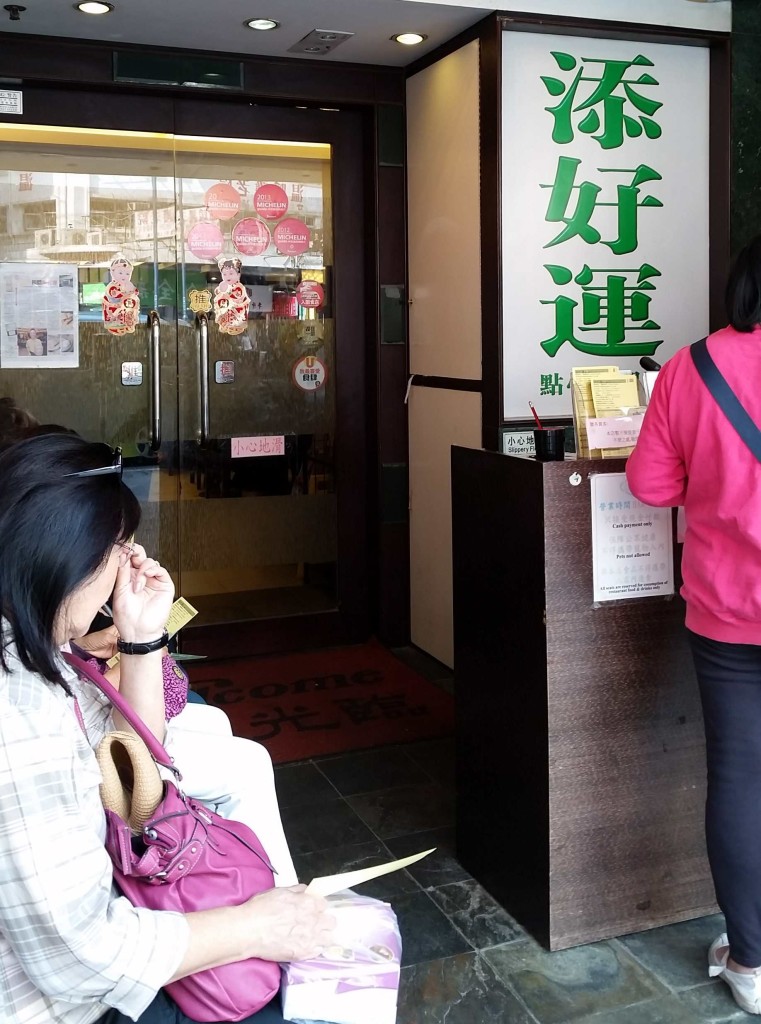
Tim Ho Wan
I’m not the biggest dim sum fan, but when I visited Hong Kong for the first time this past fall, I knew I had to try the food in its city of origin. So why not go for the best?
Tim Ho Wan offers the cheapest Michelin-starred food in the world. Dishes start at about US$1, so you can eat your heart out without breaking the bank (and with the US dollar rising in value, now is a good time to go). Even though my mother and I were on our own, we still ordered a respectable 10 dishes — not as many as the table next to us, which, judging by the number of piled-up bamboo steamers, I’m pretty sure ordered the entire menu.
I visited the Sham Shui Po location in Kowloon, the only restaurant of the four in Hong Kong that actually has a Michelin star. It wasn’t the easiest location for us to get to — my mom actually said to me, “This better be worth it” — but Tim Ho Wan’s dim sum was easily the best I’ve ever had. Every dish was just as you’d expect and more, with high quality ingredients crafted by a subtle hand.
My absolute favorite dish was the char siu bao (barbecue pork bun), which is baked instead of steamed here at Tim Ho Wan. The best part was the sweet flaky topping reminiscent of the kind found on Chinese pineapple buns (named for their appearance and not for their ingredients), which provided another layer of texture. I still drool thinking of these!
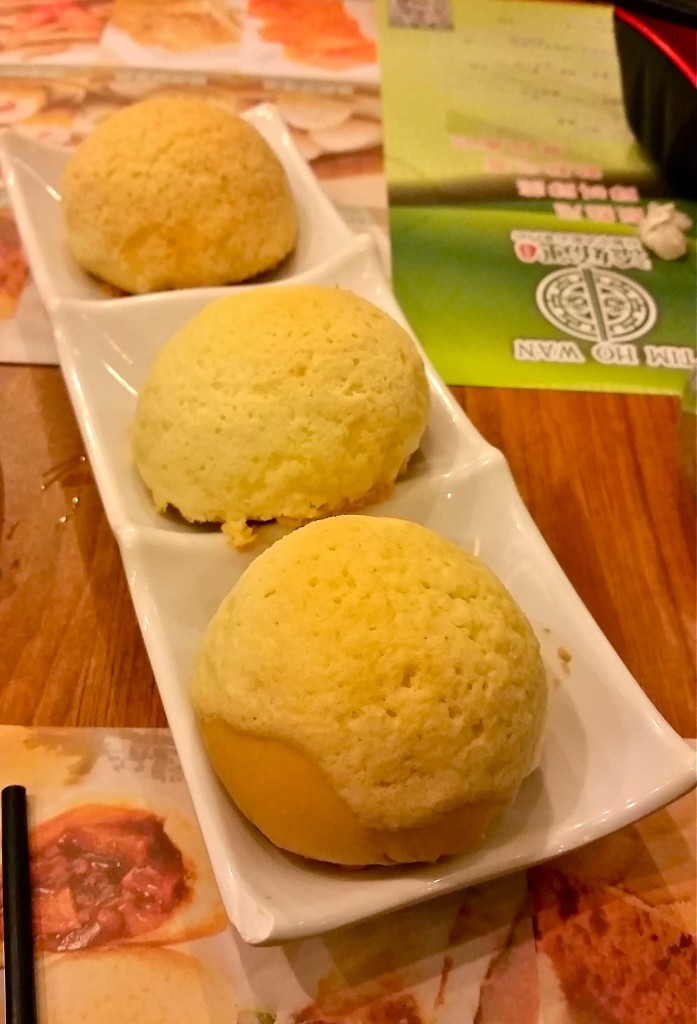
Char siu bao
Tim Ho Wan’s har gow (shrimp dumpling) and shu mai (pork, shrimp and mushroom dumpling) were the best I’ve ever tasted, too. These are not usually my favorite dishes at a dim sum meal, but Tim Ho Wan’s versions are delicate with just the right balance of flavors. There are no thick or gummy dumpling skins here.
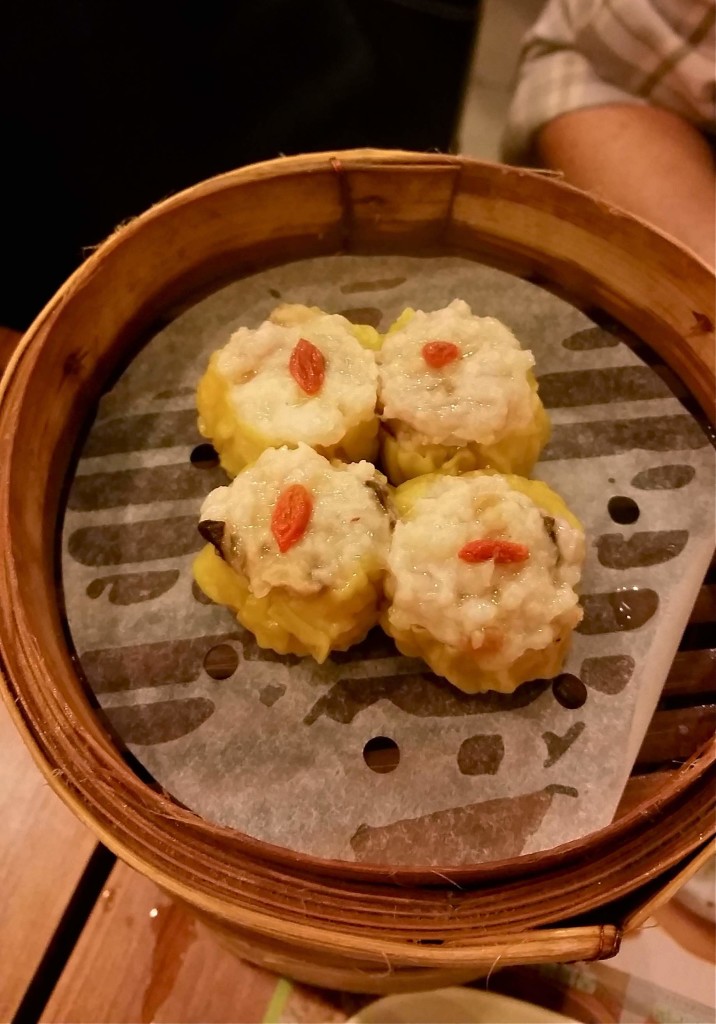
Shu mai
The lor mei gai (sticky rice steamed in a lotus leaf) is huge; I’m not sure we were able to finish it. Again, execution is on point, with rice moist with the juices of chicken and mushrooms.
The jook (rice porridge) offered up some funkiness, as it was studded with bits of salted pork and thousand year old egg. I can’t take a lot of this type of egg — it’s preserved with salt and quicklime to a point where the yolk turns dark green-gray and the white turns into a brown translucent jelly — but in small doses, it can turn a boring porridge into something special, and it certainly does at Tim Ho Wan.

Jook
For dessert we had ji dan gao (steamed egg cake), a specialty at Tim Ho Wan. This was my grandmother’s favorite dim sum dish, and I bet she would have liked this one. The cake is fluffy and lightly sweet from the brown sugar.
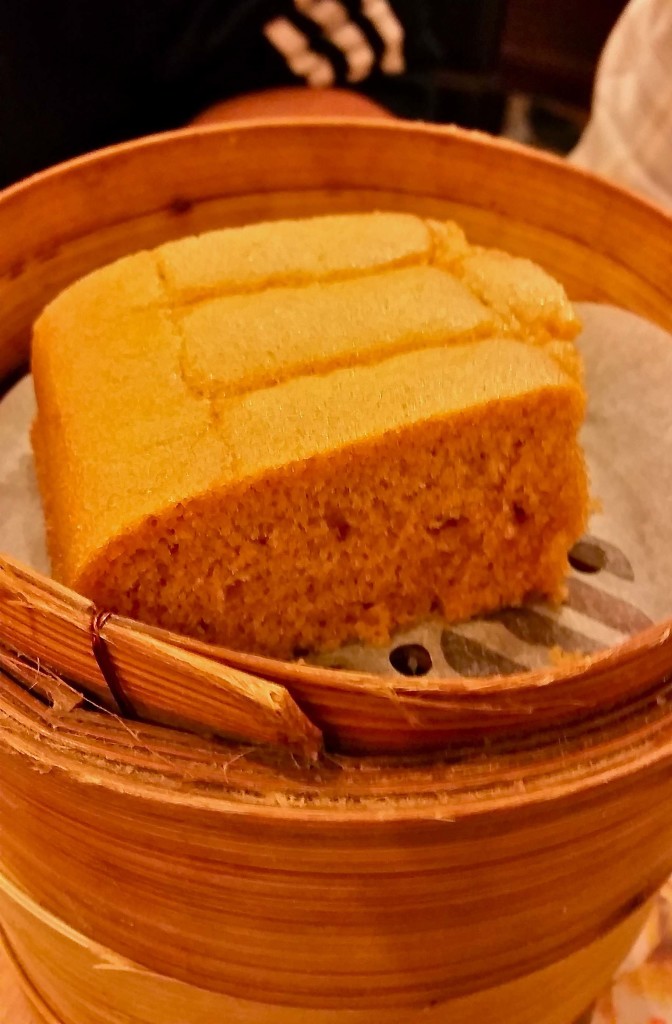
Ji dan gao
We also had the gui hua gao (osmanthus flower jelly with goji berries). The jelly is just sweet enough and delightfully fragrant. If you’re a fan of flowery flavors, as I am, then you’ll like this.
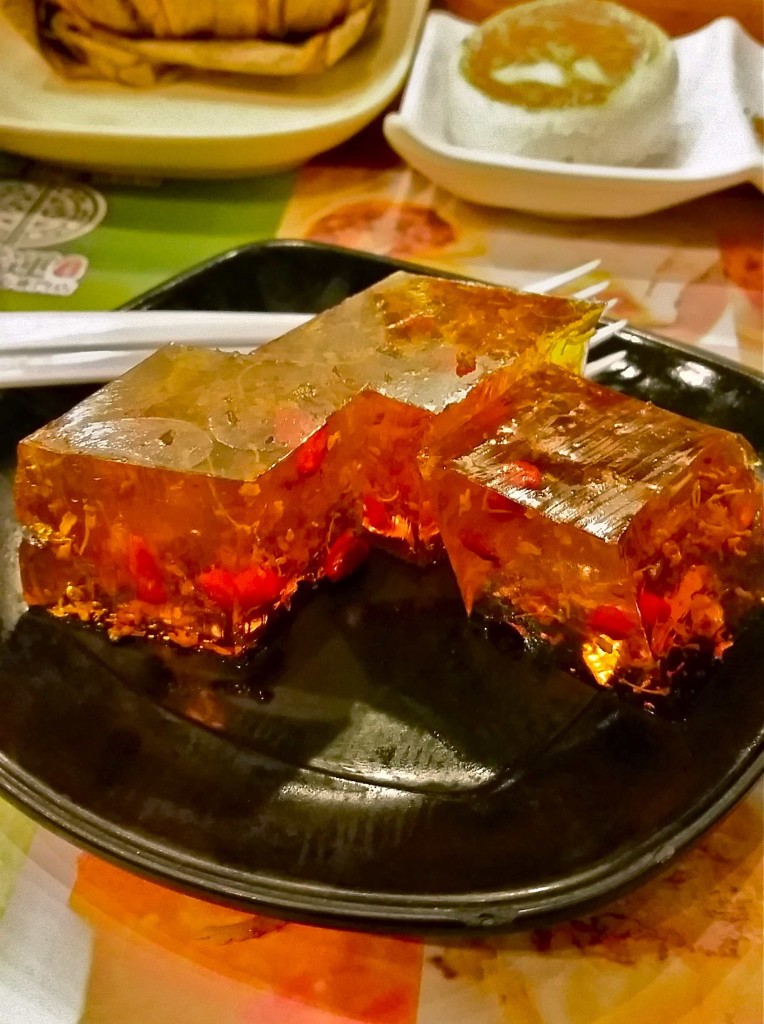
Gui hua gao
If I ever go back to Hong Kong, I’m definitely going back to Tim Ho Wan. While I know there are other locations all over Asia and even in Australia, I’m afraid any other location wouldn’t live up to the standard of the Sham Shui Po restaurant. But I’m still crossing my fingers for one to open in Los Angeles!
Tim Ho Wan
9-11 Fuk Wing Street
Sham Shui Po, Kowloon, Hong Kong
Nearest MTR station: Tsuen Wan Line, Sham Shui Po, Exit B2
Further reading:
Tim Ho Wan – The Cheapest Michelin-Starred Dim Sum in Hong Kong by Sassy Hong Kong
Dim Sum: A tradition that’s anything but dim by South China Morning Post






